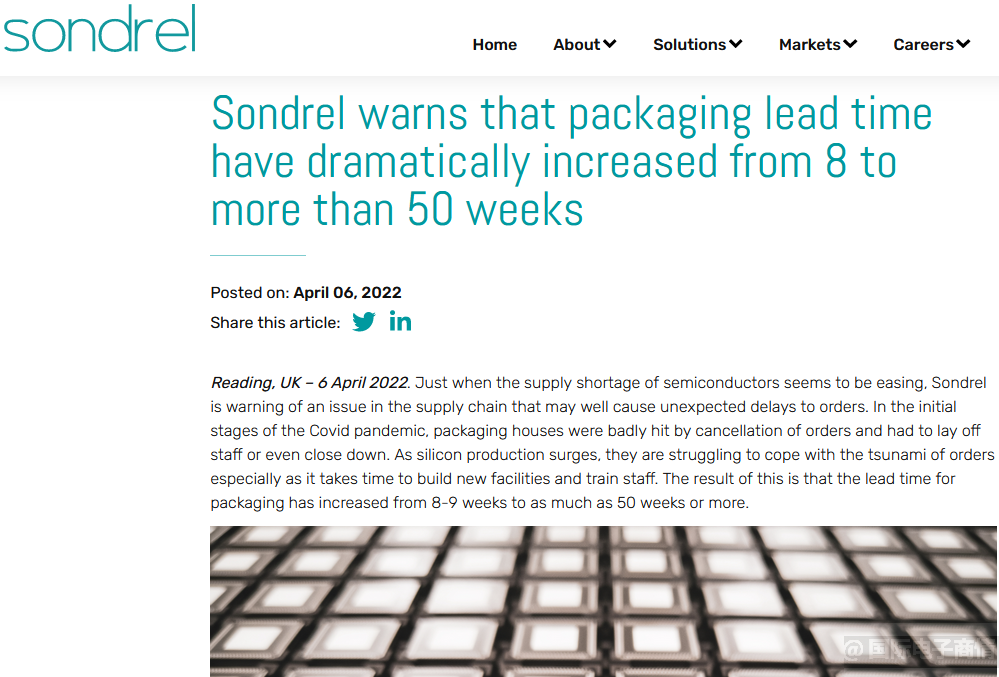
On April 12, according to Taiwanese media "Economic Daily", IC design service consulting firm Sondrel pointed out that although the semiconductor supply shortage seems to be easing, the packaging lead time has been extended from the original 8 weeks to 50 weeks.
Sondrel, a UK-based IC design service consultancy, pointed out that in the early days of the outbreak of the new coronavirus pneumonia, packaging factories experienced customer orders cut, and had to lay off staff and even close some factories. However, with the recovery of semiconductor production capacity, the situation has reversed. Today's packaging factories are trying their best to hire more employees to solve the large number of orders that hit like a tsunami.

The reality is that today's lead times for packaging processes have increased from 8-9 weeks to 50 weeks or more, as building new capacity and recruiting and training skilled line staff take a not-so-short period of time.
In addition, Sondrel analyzed that due to the continuous shortage of cores, the previous order of production capacity in the semiconductor supply chain has changed. In the past, the IC design end was completed first and then handed over to wafer manufacturing for about 12 weeks. At the same time, the packaging details will also be prepared by the packaging factory before entrusting the foundry.
The current situation is that it takes at least 20 weeks to complete the package design and production capacity before the semiconductor design, to ensure that the wafer fabrication and packaging can be completed together. Sondrel said that if the new semiconductor manufacturing process pattern mentioned above is not noticed, the chip production cycle will be delayed to about 40 weeks.
ASE Investment Control, a major packaging and testing company, pointed out last year that the semiconductor industry continues to expand capital expenditures, equipment delivery times continue to lengthen, and the supply of wafers, carrier boards, lead frames, etc. is still tight. ASE originally estimated that supply and demand in 2023. Balanced, but from the current situation, semiconductor production capacity and supply chain constraints will continue beyond 2023.




